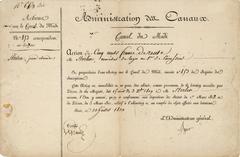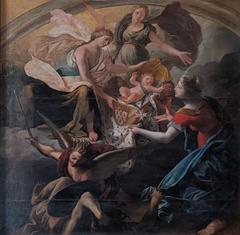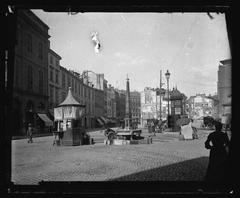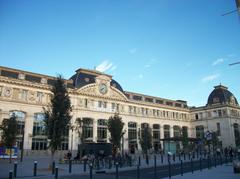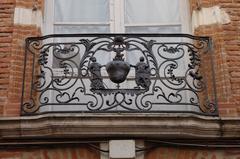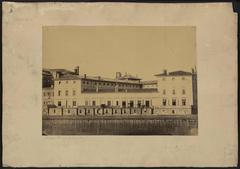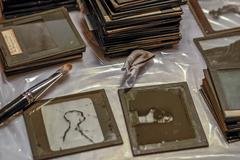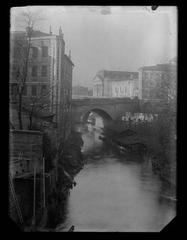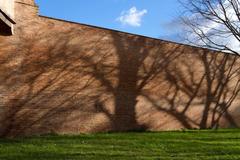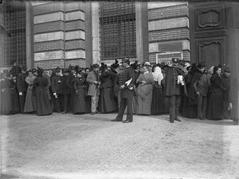
Hôtel De Pénautier Toulouse: History, Visiting Hours, Tickets, and Essential Information
Date: 03/07/2025
Introduction
Nestled in the heart of Toulouse’s historic center, the Hôtel De Pénautier is a striking example of Renaissance and Baroque architectural heritage. This grand hôtel particulier—an urban mansion built for the wealthy—stands as both a testament to the city’s “Golden Age” prosperity and a living monument to its enduring cultural legacy. Renowned for its signature pink brick façade, ornate stonework, and architectural innovations, the Hôtel De Pénautier encapsulates the story of Toulouse’s transformation from a medieval stronghold to a vibrant Renaissance city (TravelSetu, KevMRC).
While the building is primarily a private residence and not open for public visits year-round, it welcomes guests during select cultural events—most notably the European Heritage Days—offering rare opportunities to explore its interiors and appreciate its grandeur (Monumentum JEP, Toulouse Tourisme). This guide will provide a comprehensive overview of the Hôtel De Pénautier’s architectural and historical significance, practical visiting details, accessibility, and tips for making the most of your visit to this emblematic Toulouse historical site.
Origins and Architectural Context
The Hôtel De Pénautier was commissioned in the late 17th century by the Pénautier family—wealthy financiers and key figures in Toulouse’s economic and social circles. The fortunes amassed from the pastel (woad) trade, which brought immense prosperity to the region, enabled the construction of such lavish residences. Like its contemporaries, including the Hôtel d’Assézat and Hôtel de Bernuy, the mansion was designed to showcase status, architectural innovation, and the city’s distinctive rose-colored brickwork (NonStopSystems, francetoday.com).
The mansion’s architecture reflects the transition from defensive medieval buildings to refined Renaissance dwellings. Its elegant façade, symmetrically arranged windows, classical pilasters, and grand portal are hallmarks of this period’s design aesthetic. A private courtyard, arcaded galleries, and a monumental staircase—often adorned with wrought-iron balustrades—underscore the skilled craftsmanship and cosmopolitan influences of the era (KevMRC).
Historical Significance and Evolution
The Hôtel De Pénautier stands as a symbol of Toulouse’s commercial and cultural ascendancy during the Renaissance. The mansion’s construction paralleled the city’s transformation into “La Ville Rose,” a moniker inspired by its iconic pink brick architecture (France.fr). The prosperity of the pastel trade fostered a competitive spirit among Toulouse’s elite, each seeking to outdo the others with more impressive residences.
Over the centuries, the mansion adapted to changing times. As the woad trade waned in the late 16th century and new economic realities emerged, the Hôtel De Pénautier retained its aristocratic prestige. The 18th and 19th centuries brought urban modernization and restoration efforts, ensuring the preservation of its historical character amid evolving cityscapes (NonStopSystems).
Architectural Features
Exterior
- Façade: Constructed from the city’s renowned pink brick, accented with stone detailing, the façade is a masterpiece of symmetry and Renaissance style.
- Decorative Elements: Pilasters, cornices, sculpted window frames, and coats of arms reflect both Italian Renaissance influence and the aspirations of the Pénautier family.
- Grand Portal: The entrance features a sculpted archway and wrought iron gates, inviting visitors into the private world of the mansion.
Interior & Courtyard
- Central Courtyard: The cour d’honneur is paved and surrounded by arcaded galleries, providing privacy and an impressive sense of space (gpsmycity.com).
- Staircase Towers: Characteristic of Toulouse’s hôtels particuliers, the spiral or straight staircases housed in prominent towers symbolize both function and upward mobility.
- Reception Rooms: High ceilings, ornate fireplaces, and decorative plasterwork define the grand salons and private chambers, though these are most often accessible only during special events.
Visiting Hôtel De Pénautier: Hours, Tickets & Practical Information
Location
- Address: 16 Rue Vélane, 31000 Toulouse
- Accessibility: Located in the historic center, near major sites such as Place du Capitole and Basilica of Saint-Sernin. Closest metro: Esquirol (Line A) (Guide Toulouse Pyrénées).
Visiting Hours & Tickets
- Regular Access: Hôtel De Pénautier is a private residence and not open for general public visits.
- Special Events: Opens during European Heritage Days in September and occasional guided tours. Admission is typically free during these events, but some guided tours may require advance booking (Monumentum).
- Booking & Schedules: For up-to-date information on visiting hours and tour availability, check the JEP program and the Toulouse Tourist Office.
Guided Tours
- Guided visits are usually required during openings to protect the site’s heritage. Tours are mainly in French, with English options available during larger events. Book ahead to secure your spot (Toulouse Tourism).
Accessibility
- Due to the mansion’s age, accessibility is limited: expect staircases and uneven flooring. There is no official wheelchair access, so visitors with mobility needs should inquire in advance (Guide Toulouse Pyrénées).
Facilities
- As a private property, there are no tourist amenities (restrooms, cloakrooms, cafés) on site. Numerous cafés and public amenities are available nearby (France Voyage).
Photography & Etiquette
- Non-flash photography for personal use is generally allowed during public events, subject to room-specific restrictions. Respect all staff instructions and refrain from touching decorative features (Monumentum).
Cultural and Social Context
The Hôtel De Pénautier is part of a rich network of Renaissance mansions that define Toulouse’s historic core. These residences, built during the city’s pastel-fueled boom, embody the social ambitions, artistic tastes, and cosmopolitan outlook of the city’s elite. The area remains vibrant, with nearby attractions including the Hôtel d’Assézat, Hôtel de Bernuy, Place du Capitole, and the Musée du Vieux Toulouse (Taste of Toulouse).
Nearby Attractions
- Église Saint-Jérôme (106 m): Baroque church renowned for its interior.
- Musée du Vieux Toulouse (154 m): Museum dedicated to the city’s history.
- Capitole de Toulouse (167 m): Iconic city hall and theater.
- Hôtel de Bernuy (285 m): Another Renaissance mansion, open during special events.
These sites are all within easy walking distance, making the Hôtel De Pénautier an excellent starting point for exploring Toulouse’s architectural treasures (France Voyage).
Practical Tips
- Best Time to Visit: European Heritage Days in September offer the best chance to access the interior. Spring and autumn are ideal for walking tours (Hikersbay).
- Dress Code: Wear comfortable shoes for cobblestone streets. Modest attire is advised during guided tours.
- Language: French is the primary language; English is commonly understood in tourist areas.
Frequently Asked Questions (FAQ)
Q: Is Hôtel De Pénautier open year-round?
A: No. As a private residence, it generally opens only for special events such as European Heritage Days.
Q: Is there an entry fee?
A: Admission during public events is usually free; some guided tours may require advance booking.
Q: Is the building accessible for those with limited mobility?
A: Accessibility is limited due to the historic architecture. Contact the tourist office for arrangements.
Q: Can I take photographs inside?
A: Non-flash photography is typically allowed during events, with possible restrictions in certain rooms.
Q: Are there tourist amenities on site?
A: No. Please use nearby public facilities.
Visual Recommendations
- Include high-resolution photos of the pink brick façade and courtyard (alt text: “Hôtel De Pénautier Toulouse exterior” and “Courtyard of Hôtel De Pénautier Renaissance architecture”).
- Embed a map of the mansion’s location.
- Link to virtual tours if available.
Summary
The Hôtel De Pénautier is a jewel of Toulouse’s Renaissance heritage, distinguished by its elegant architecture, historical significance, and evocative pink brick façade. While access is limited, special cultural events provide rare chances to step inside and experience its grandeur. Visitors are encouraged to complement their visit with guided tours, explore nearby monuments, and make use of resources like the Audiala app for enriched experiences. The mansion stands as a symbol of Toulouse’s vibrant past and ongoing commitment to heritage preservation (France.fr, KevMRC, francetoday.com).
Contact and Further Information
References
- TravelSetu
- NonStopSystems
- KevMRC
- France.fr
- Francetoday.com
- Toulouse Tourisme
- Monumentum JEP
- Guide Toulouse Pyrénées
- France Voyage
- Hikersbay
- Taste of Toulouse
- gpsmycity.com
Explore more about Toulouse historical sites in our related articles to plan a comprehensive visit.



